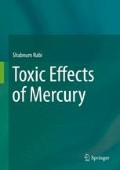Abstract
The elevated plus maze (EPM) is a rodent model of anxiety that is used as a screening test for putative anxiolytic or anxiogenic compounds and as a general research tool in neurobiological anxiety research (Fig. 11.1).
Access this chapter
Tax calculation will be finalised at checkout
Purchases are for personal use only
References
Anisman H, Matheson K (2005) Stress, depression, and anhedonia: caveats concerning animal models. Neurosci Biobehav Rev 29:525–546
Bennet CΑ, Franklin ΝL (1967) Statistical analysis in chemistry and chemical industry. Wiley, New York
Cagiano R, De Salvia MA, Persichella M, Renna G, Tattoli M, Cuomo V (1990) Behavioral changes in the offspring of rats exposed to diazepam during gestation. Eur J Pharmacol 177:67–74
Carobrez AP, Bertoglio LJ (2005) Ethological and temporal analyses of anxiety-like behavior: the elevated plus-maze model 20 years on. Neurosci Biobehav Rev 29:1193–1205
Crabbe JC, Harris RA (1991) The genetic basis of alcohol and drug actions. Springer, New York. ISBN 0-306-43868-2
Di Giovanni V, Cagiano R, De Salvia MA, Giustino A, Lacombo C, Renna G, Cuomo V (1993) Neurobehavioral changes produced in rats by prenatal exposure to carbon monoxide. Brain Res 616:126–131
Engin E, Treit D (2008) The effects of intra-cerebral drug infusions on animals’ unconditioned fear reactions: A systematic review. Prog Neuropsychopharmacol Biol Psychiatry 32(6):1399–1419
Fava M, Kendler KS (2000) Major depressive disorder. Neuron 28:335–341
Hasler G, Drevets WC, Manji HK, Charney DS (2004) Discovering endophenotypes for major depression. Neuropsychopharmacology 29:1765–1781
Hogg S (1996) A review of the validity and variability of the elevated plus-maze as an animal model of anxiety. Pharmacol Biochem Behav 54:21–30
Hua-Cheng Yan, Xiong Cao, Manas Das, Xin-Hong Zhu, Tian-Ming Gao (2010) Behavioral animal models of depression. Neurosci Bull 26(4):327–337
Kessler RC, Berglund P, Demler O, Jin R, Merikangas KR, Walters EE (2005) Lifetime prevalence and age-of-onset distributions of DSM-IV disorders in the National Comorbidity Survey Replication. Arch Gen Psychiatry 62(6):593–602
Lalonde R, Strazielle C (2008) Relations between open-field, elevated plus-maze, and emergence tests as displayed by C57/BL6J and BALB/c mice. J Neurosci Methods 171(1):48–52
Murray CJ, Lopez AD (1997) Alternative projections of mortality and disability by cause 1990–2020: global burden of disease study. Lancet 349:1498–1504
Pellow S, Chopin P, File SE, Briley M (1985) Validation of open-closed arm entries in an elevated plus-maze as a measure of anxiety in rat. J Neurosci Methods 14:149–167
Porsolt RD, Le Pichon M, Jalfre M (1977) Depression: a new animal model sensitive to antidepressant treatments. Nature 266:730–732
Rodgers RJ (1997) Animal models of anxiety: where next? Behav Pharmacol 8:477–496
Spyker JM, Sparber SB, Goldberg AM (1972) Subtle consequences of methylmercury exposure: behavioral deviations in offspring of treated mothers. Science 177:621–623
Steru L, Chermat R, Thierry B, Simon P (1985) The tail suspension test: a new method for screening antidepressants in mice. Psychopharmacology 85:367–370
Sukul NC, Sukul A (2004) High dilution effects: Physical and biochemical basis. Springer, New York. ISBN 1-4020-2155-0
Tobach E (1969) Experimental approaches to the study of emotional behavior. Ann N Y Acad Sci 159:621–1121
Treit D, Menard J, Royan C (1993) Anxiogenic stimuli in the elevated plus-maze. Pharmacol Biochem Behav 44:463–469
Vollmayr B, Mahlstedt MM, Henn FA (2007) Neurogenesis and depression: what animal models tell us about the link. Eur Arch Psychiatry Clin Neurosci 257:300–303
Willner P, Mitchell PJ (2002) The validity of animal models of predisposition to depression. Behav Pharmacol 13:169–188
Winneke G, Brockhaus A, Baltissen R (1977) Neurobehavioral and systemic effects of long term blood-lead elevation in rats. I: discrimination learning and open field behavior. Arch Toxicol 37:247–263
Author information
Authors and Affiliations
Rights and permissions
Copyright information
© 2014 Springer India
About this chapter
Cite this chapter
Nabi, S. (2014). Neurobehavioral Assessment Models. In: Toxic Effects of Mercury. Springer, New Delhi. https://doi.org/10.1007/978-81-322-1922-4_11
Download citation
DOI: https://doi.org/10.1007/978-81-322-1922-4_11
Published:
Publisher Name: Springer, New Delhi
Print ISBN: 978-81-322-1921-7
Online ISBN: 978-81-322-1922-4
eBook Packages: Biomedical and Life SciencesBiomedical and Life Sciences (R0)

